Thank you! Your comment has been submitted successfully. You should be able to view your question/comment here within a few days.
Error submitting comment. Please try again momentarily.
- All Info
- Reviews (47)
- Q & A (0)
- Videos (3)
- Photos
Redline Trailer Bearings Races Seals Caps - 10-56
- Seals
- Oil Seals
- 4.500 Inch O.D.
- 3.125 Inch I.D.
- Redline
| Inner Diameter (ID) | Outer Diameter (OD) | Application: |
|---|---|---|
| 3.125" | 4.5" | AL-KO 12K, Dexter 10K, 12K, 15K & Hayes 10K - 12K |
| Seal Cross-Reference | ||||
|---|---|---|---|---|
| Dexter # | Transcom # | National # | NOK # | Chicago Rawhide # |
| 010-056-00 | - | 370014 | - | CR318281 |
10-56 Oil Seal
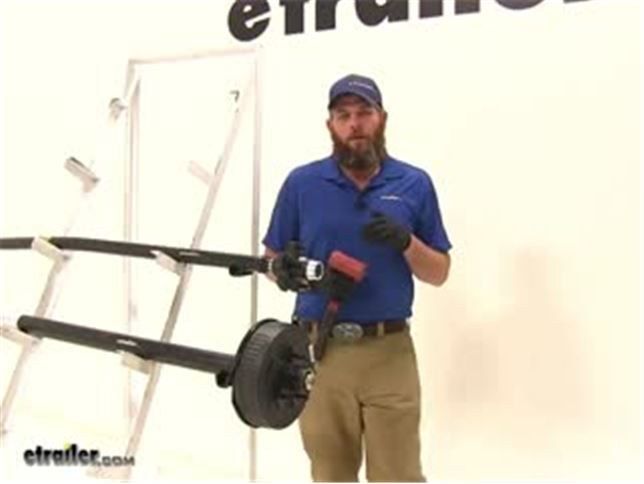

Videos are provided as a guide only. Refer to manufacturer installation instructions and specs for complete information.
Video Transcript for Trailer Bearings Races Seals and Caps Rebuild
Speaker 1: Today we're going to take you through the rebuild process on a couple of hubs. We've got an idler hub, and here we've got a hub and drum assembly. Works with electric rigs, but this can also work for just standard discs, if you've got a disc brake style setup.Basically what we're going to show you is how to get all of the bearings out. How to remove the seal. How to remove the race's if they're damaged, then get them replaced in the proper manner. We'll show you how to use an easy loop hub, which we have here.The first thing we are going to need to do is, get the grease cap off the end.
It can have either a rubber plug in it like this one does, or it can be a solid metal cap.These are pressed fit in there, basically by tapping on them on the back side. To remove them, a deadbolt hammer is typically what we're going to use. We're just going to start tapping as we go around. You'll see a little separation start right here, and slowly it'll work it's way off.Now the next step's going to vary a little bit depending on your axle setup. Do you see this is going to have a keeper that goes around the nut.
And that prevents that from being backed off, or removed. A lot of times you'll have a castle nut, which will have just little tabs that stick off, and there will be a cotter pin that passes through it. Just depending on your application, you need to get the keeper for the nut off. This style we just kind of pry out. A cotter pin you would just remove of course.Once we have that off ...
We'll start to take off the nut here, and the washer that's in behind it. Now yours should look a whole lot more dirty than this. There should be a lot of grease packed in, and through the hub, this one's brand new. We thought it'd be nice to show you the components before the grease was on .. Of our washer that comes off.And then here we're going to have our outer bearing.
Continue to pull that. We're gonig to have our inner bearing here. That sits in the backside of the hub. And we didn't put it in yet, we will show you how to put it in. But a seal would typically be covering the backside here. We'll show you how to use a seal removal tool, or another tool. To get that pried up and out. To get an access to that inner bearing.Now for a drum style like this, that process for disassembly is going to be just the same. One thing to keep in mind if you're using a disc brake setup. You'll have to remove the caliper before the disc is going to come off.Now once we have the spindle exposed, as we said this is going to be really greasy. We want to get all the grease removed, and the first thing we'll do is inspect it. We want to make sure that it looks just like what we have here. Everything's nice and smooth. We don't see any kind of discoloration, or any marring on the metal. Indicating that our bearing's got hot.If you do have any of those symptoms, at this point it's time to replace those bearings. You don't want to repack them. Get new bearings, and put in there. You might have a bearing that's come apart in here. Another surface to ensure is in good condition, is where your seal is going to go. That helps seal all the grease inside of our hub. With a damaged or broken seal, that grease is going to seep out. Either out of the hub, or in this case into our brake assembly.Now if your axle has brakes, we're also going to check the disc. Make sure it doesn't have any issues, or your hub. And this is going to be a hub and drum assembly. The brakes are going to ride on this machine surface. You're going to check that for signs of excessive heat, discoloration, or cracking. And this is our magnet surface. We'll check that surface for the same issues.Now inside the hub regardless if it's a disc brake, it's a drum brake like this. Or just a standard idler style hub. You're going to have an outer race. Would be right here, it's a small tapered piece of metal your bearing sits in, and rotates on. That's basically the outer portion of the bearing.You have the same thing here on the backside. This is called the inner race. Now if those show any signs of wear, overheating, or cracking. Those are also something we'll need to replace, which we'll show you how to do in just a minute.Now, with your brake assembly exposed, if you do have electric brakes like we have here. It's a good idea to check all the components for wear, cracking, maybe missing pieces. Check your pad thickness to make sure those are in good shape. Basically if you have a non working brake assembly and you put everything back together, you're just going to have to take it apart and do it all over again to get back to the brake assembly. This gives you a really good option to be able to change them out.And most applications are going to use a four, or maybe a five bolt flange to hold them in place. And you'll just remove the lock nuts, or sometimes you'll have a hex nut with a lock washer. You want to remove those, and then simply slide your assembly off after you cut the wiring.The friction material itself should also be checked for any kinds of cracking, or overheating. If you have any grease inside the system at all, it's likely it's gotten on those pads. It's a good idea to get those changed. Now as far as the removal of the races go, it's going to be just the same whether we're using an idler style hub like we have here. A drum brake like we have here. You can basically see where the idler is, here in the middle of the hub. It's going to go all the way around there, and we just have this extra material here to provide our braking surface.Now if you're doing a disc brake style job again, it's going to be just the same here with the races living inside of the actual hub portion. You'll just have the discs there for the brakes to make contact. We're going to use this little bit smaller one, it's a little bit easier to manage to show you how to get these out. We've talked about where the races are. The outer here, the inner being closer to the inside, but on the backside of the race there's a little lip. That lip's meant to stick out just a little bit further than the hub, and provide us an area to put our tool on, and help to drive that out.If you look all the way through there on that inner race, you'll see that little lip that sticks out just from the hub slightly, and it gives us enough area to use our tool on. Now generally to remove these you're going to use a punch, similar to this. Some guys will use a screwdriver. Or a piece of pipe. If you have a piece of pipe that's small enough to fit inside of that diameter, you can take that down through and allow it to rest on that lip.Use our punch, and then just need a hammer. And we'll start working that out. We're going to tap all the way around. Kind of equally, and evenly apply the force to get it to come on out of the bottom for us.You can see now as it starts to come out there's going to be a little gap created between the hub and the race. And we can just keep going, bringing it on out. Then you can inspect the inside of the hub surface there. Make sure no damage or anything has occurred, and repeat that same process for the outer race if you plan on removing and replacing that one.Now in the outer flat edge, you can see we're going to have our tapered edge on this side. If we roll our race over to the flat side, typically there's going to be a manufacturers part number on there. That will help you identify which race it is, that you need to go back in your system. If those are rubbed off, worn off, if you can't read them. You can measure the outside, to outside diameter of the race here. It's a good idea to use a micrometer to get it exact.Now here's your basic micrometer. And again, the outside of the race is what we're going to need to measure. You want to go . I set the thickest point there. Looks like this one's going to be about 1.98. That's going to be the measurement you'll want to supply.Now while we've got this out, let's also look at the proper way to measure our bearing. Instead of the outside for the bearing, we need to measure the inside diameter. That's going to be pretty simple. Let's pull that out, find the largest measurement we can. Which here, looks like it's going to be 1.03. With that information, we'll be able to get the correct bearing, and the correct race, so they'll fit together properly and make a full bearing kit for us.Now here's the race, we're going to show you how to get this put back in. Basically just going to press fit inside of our hubs. We need to get it down on there. Kind of like that. And you'll have a couple options. A lot of times you're going to see do it yourself or at homer, just going to use a wooden block. Just place it on there. That's going to get you started, but at that point you'll struggle in getting it to go all the way down into it's seat.Now to take care of that problem, there are several seal drivers that are available. Seal and race drivers that are available out there on the market. It's designed to fit down inside of our race, inside of our hub and get it down there where it needs to go. This is part number ptw83020, has several different sizes, even if you have multiple trailers it's going to do the job.Now the side with the angle on it, is designed to fit down inside of our race. If we use the other side, that's going to be for driving your seal into place. Just want to hold it, and take it on in with your hammer. You'll see, you just want to insure that our race is all the way up against that line on the hub where it's supposed to mate to.Now when it comes time to pack your bearings you're going to have several different ways of doing this. You can just use your hand, is the traditional method. That's going to be the method probably reserved for the very occasional trailer work kind of situation. If you do it once or twice a year, probably get away with it that way.Next you would go to a, kind of a sandwich funnel style almost. If you look inside of there, you can see the bearing. It's located between the two pieces. Just use a grease gun. Start filling that with grease, and that's going to fill our bearing for us. And the third, with this one you're just going to place your bearing down and in. It should be pretty close to center. And then we've got our cone her that's going to go down and secure that.Now I think this style, wastes a little bit more grease than what this style will. This has a dust cap. You can see, you can keep your grease in there, put your dust cap on there and save it for later use. This will be if your going to do it every couple years. And this particular style would be if you're a more regular user.Let's start by showing you how to use a bearing packer. Similar to this. Again, we've just got our grease inaudible 00:11:07 here on the top. And then just slowly start to fill it. Now I like this style quite a bit. I think even regular users might enjoy it, because you can get a really quick visual look at that bearing. You're not going to have to overdo it, or have to much grease.You can kind of see in there now, we're starting to get grease to come out of it. Couple more pumps, we'll be good. You can see we've got grease coming out all the way around. Where all of our bearings are. Got a little bit of excess there. Just take that around the outside of it. And then we should be able to lift it off. And now you can see what we we're talking about. Just a little bit of excess there, that you're just going to wind up wasting.Now we'll take our bearing, we're going to place it right down in our race. And then we'll cap off the back with our seal. Right now our seal's going to fit in just like our race did. It's going to have a little bit of a pressure fit to it. Now very often in this situation, I see people using the four by four method. Kind of here, just placing that on and tapping it. As an option though, if you do have one of these. You can see that's designed to fit right on the top of the seal. And help drive it in.The biggest thing here is, just going to be getting it driven in squarely. You can see, this side's in a little bit further than this side. I'm going to start this side first. Now since we didn't have the opportunity to show you before, we're going to take a look at pulling a seal. Now this is a seal puller, we carry this on our website part number ptw1219. This is meant to hook underneath the seal. And then you kind of pull up on it, and just like our race you'll have to work all the way around that edge. Just bringing it out a little at a time.If you don't have that available. Another option would be a screwdriver. You just kind of get that under the seal, and turn it. And see, that'll allow you to also pop that out. We've taken care of our race. Our inner bearing. Our seal. The last component, before we put our hub back in place is going to be our outer bearing. Now with this bearing, I'll show you the hand packing method.This is definitely . Slightly dirtier method than the bearing packer. When we get grease on our hand we want to look at the larger side of the bearing. This is the smaller side. We have a larger side In between the inside and outside there's a gap. We can see our rollers in there. We want to grab that, and use that gap and shove grease inside of it. Now this is going to take a little bit, you want to work in the same spot until you get the grease pushed all the way through. We can see on the top there we've got a little bit starting to come through.And once we push it in the bottom, and you see it start coming out the of the top in those little drips, it's going to indicate that, that section's fully packed. Just need to work all the way around their outside edge now and do the same thing. Alright, once that's all the way around . The bearing will be ready for use.Now one more thing I like to do. We can see our inner bearing there, and our outer bearing. Well between the two, got a pretty big gap in there. If you'll take a . Pretty good amount of grease. We're just going to go all the way around. See how we can go all the way around the inside and just line that really well. The more grease we have in here, the less chance we have of any moisture getting in there, which can cause corrosion, rust, pitting. Pretty much things we do not like when it comes to bearings, races, and hubs.Put plenty of grease in there. And then this one does have the easy lube spindle, that'll even fill it in more. Now we can get our assembly slid on. I like to keep my thumbs on that outer bearing, just to prevent it from . inaudible 00:15:28 pushed off there. Now we can put on the original hardware that we removed, in taking off our hub the first time. In our case, we had our washer and our nut.Now most commonly you'll see pliers similar to this being used. We basically want to get that tightened down. Once it's fully tightened down you'll feel some resistance in the hub. We back it off just slightly. That'll give us a little bit more freedom of motion there. Something you don't want however . Is any movement in, or out on your hub. You want to be sure that everything is compressed, and you don't have what's called end play. Which would be the play in and out.Once we've got that set, then you'll put on whatever tight keeper yours came with. Get that put back in place. Now with an easy lube style hub, you're going to place your grease gun on the end, and then you can just fill the remainder of that hub up.Now for your typical applications, you're either going to have a solid cap, or a cap that'll have a rubber plug in it. A solid cap's going to be for an axle without the grease inaudible 00:16:51 here on the end. Goes on there. Just knock it on with your rubber mallet. Same with the one with the plug. Just gives you a removable area there, be able to cap that off.We'll show you how to put that on. Now as alternatives as well, a lot of times on boat trailers and marine kind of situations. You'll see a bearing buddy. This is going to apply a little bit of pressure on the grease, you'll fill it up. This kind of comes out just a little bit. That applies constant pressure on the grease to make sure we don't have any air, or anything like that. Then there is also an oil bath hub available. Now this is going to be for use with seals that are going to be designed specifically for oil bath use. You'll have to change that seal.We're using a double lip seal. There are also single lip seals available. Of course a double lip seal is going to give you just a little additional security. Keep that in mind when you order. But let's get this knocked on there now so you can see how that works. We just want to take the cap, we're going to center it. This is going to be very similar to what we did with the seal. And then just gently start tapping it around the outside. And it'll seep down on there for you.It's really going to be the same thing that you'll do with any of the end caps. Now with this side done, it's a good idea to take care of all the other hubs. Get them all on the same maintenance schedule. And as long as you'll periodically check the grease, take your trailer out for a trip occasionally. Just to keep everything lubricated. It should extend the life of these parts, and give us years of good service.
Customer Satisfaction Score:
98% were satisfied with this product
2% of customers were not satisfied
- Wrong item was ordered
- etrailer mistake
Customer Reviews
Oil Seal - 10-56
Average Customer Rating: 4.3 out of 5 stars (47 Customer Reviews)
Usually you are completely on top of your game. This time my company is slightly disappointed in the timeframe of events. We stock checked all parts prior to ordering but then found out after the order was placed some were not in stock. Nobody reached out to let us know the parts were out of stock or asked if we would like to have the rest of the order shipped while waiting for the remaining out of stock items. Once we called we were able to get things moving however the shipment still was not expedited and took an additional extra five days. The products are always as expected. No issue with the quality of the parts
My parts were laying on my carport when I got back from feeding cows it looked like a train wreck. The boxes were torn apart an parts were scattered on the floor. The studs on the hubs were damaged an one of the bleeder valves on one caliper was snapped off in the housing. I was in shock an spent the rest of the day trying to fix them. I don’t no who abused my parts an tore all this up but I would like very much to beat the socks off them. That stuff cost me 2100 an some change. An I just got a bunch of junk that I’m trying to fix. The boxes were not not good enough to handle the weight. I wish I had got this from pa. Instead of etrailer.
I ordered the wrong product no fault of etrailer, the return process is flawless. The refund was processed quickly and exactly as advertised. I will certainly be a returning customer and will recommend etrailer. Excellent customer service!

Huey C.

9/28/2015
Yes, these items are still performing as expected no issues what so ever.Thanks for checking in.
Easy to install. Keeps grease clean.
Unitized seals are the only way to go. The sealing surfaces do not move once installed. Technically they are a 2 piece seal, it rotates on itself. Worked great for 10K axles. Don't know make of axles, but they had pre 1989 Warner electric brakes on them
this is a good seal easier to install than OE seal. this seals rubber outside ring does not hold up with the higher heat of Disk brakes the rubber is melting smoth then it slips and the oil runs out.

I had to buy all new assemblies for my 40 foot trailer. the items were not only less expensive than anywhere else, but my mechanic was able to install them in one day.
I have not had any issues with them. I will buy products from etrailer from now on
Great Service..
The parts were delivered on time.

Fit perfectly and no leaks very good qu ality
Great Product
great products. great pricing. fast sh ipping
Right on, fast shipment
Exactly what I was looking for and quic k!
Seals worked perfectly
See what our Experts say about this Redline Trailer Bearings Races Seals Caps
- Recommended Grease Conversion for Dexter 12k Oil Bath AxlesThe Dexter 12K oil bath axles can be changed over to grease without any issues. The oil does keep the bearings lubricated well, but there is a much higher risk of leaking which leads to a much higher risk of failure. I'd personally move to grease # L11390 and make sure it is packed well into the bearings using # PTW1218. This will allow you to use your same bearings and oil cap, but you will need to replace the seal once removed to pack the inner bearing. For that you can use # 10-56.
view full answer... - Replacement Bearings and Seals for Dexter Axle 10K Axle with Oil BathI can give you a few different options but to know the exact bearings, races, and seals you need for an oil bath on your 10K Dexter Axle you will need to take some measurements on your spindle using a digital caliper or by finding the part numbers on these pieces. Attached is a photo to show you where the part numbers are located as well as where you will need to measure on your spindle. One set of common bearings/seals are inner bearing # 387A (2.250" inner diameter) with race # 382A,...
view full answer... - Troubleshooting Oil Leaking from 12,000 lb AxleFor your 12,000 lb axles with Oil, you either have an oil cap or oil seal leaking. For the oil cap I recommend the Oil Cap Kit for 9K, 10K and 12K Axles # RG04-300. For the replacement oil seal, you most likely need # 10-56 which has an inner diameter of 3.125 and outer diameter of 4.500 inches. Finally, for your oil I recommend the Kodiak Synthetic Bearing Oil for Oil Bath Hubs - 8 oz Bottle # XLPROLUBE.
view full answer... - Disc Brake Kit And Parts Needed For a 1974 Landoll Hauloll Trailer With #120 Axle SpindlesThe Kodiak Disc Brake Kit # K2HR12A11-120DW will fit a trailer axle with a #120 spindle. You can confirm your spindle is is a #120 on your axle by ensuring the Inner Bearing # TRJM511946 (2.559" ID), Outer Bearing # JM205149 (1.969" ID) and Oil Seal # 10-56 (3.125" ID) measurements are the same on your spindle. You will need 2 of the Inner Bearings # TRJM511946, Outer Bearings # JM205149, Oil Seals # 10-56 and a bottle of Bearing Oil # XLPROLUBE for each set of the Kodiak Disc Brake Kits...
view full answer... - Oil Seal for Dexter 12,000 lb AxleThe Oil Seal # 10-56 is a fit for Dexter 12,000 lb axles; however, I do recommend using digital caliper to verify and measure your current seal's inner and outer diameter, which should be 3.125" and 4.500", respectively. I have added links to a couple video reviews for you to check out as well.
view full answer... - 12,000 lb Electric Trailer Brakes & Replacement Oil Seal & Bearings For 12k Dexter AxleI was able to find everything you need for your 12,000 lb Dexter axles; the electric brakes, oil cap kit, oil seal, bearings, and races. I verified with Dexter that these are indeed the correct parts for your 12k axles. I'll go ahead and list out each of the parts you need to make it easier to order: - Electric Trailer Brake with Dust Shield - Self-Adjusting - 12-1/4" - Left Hand - 12,000 lbs # AKEBRK-12L - Electric Trailer Brake with Dust Shield - Self-Adjusting - 12-1/4" - Right Hand...
view full answer... - Disc Brake Kit That Fits Hayes/AL-KO 12,000 lb Axle With #120 SpindleYes, your Hayes/AL-KO 12,000 lb axle with a #120 spindle is absolutely compatible with the brake kit you mentioned, the Kodiak Disc Brake Kit # K2HR12A11-120DW. This kit does require you get the bearings and seal separately, but comes with the races so you don't have to purchase those as well. What you will need are two each of the following: - Replacement Trailer Hub Bearing # TRJM511946 - Replacement Trailer Hub Bearing # JM205149 - Seal # 10-56
view full answer... - How Does Dexter 12k Oil Seal Install in HubTypically for installing oil bath hub seals you can set a wood block across it and use a hammer to push it in evenly. For a Dexter 12k axle the correct seal would be the part # 10-56.
view full answer... - Replacement Oil Seal for LCI 295924Yes we do, the correct oil seal you would need is the part # 10-56 which I verified has same dimensions as the 295924 that you have now.
view full answer... - Replacement Oil Seal for a Big Tex Trailer with 12K Dexter AxlesThanks for reaching out, Cole! It sounds like you're looking for the Oil Seal # 10-56 which has a 3.125" inner diameter and a 4.5" outer diameter. I recommend verifying the dimensions with what you have just to make sure everything matches up. If you find different dimensions please let me know and I'll be happy to further assist!
view full answer... - Availability of Spindle and Hubs for 10,000 lb Trailer AxleAs you may have noticed, the highest capacity spindle we carry is for a 7,000 lb axle, # TRU37FR. Your best bet is to source the spindles for a 10,000 lb axle through a local trailer shop or dealer. If are able to source the spindles, we do have hubs for 10,000 lb axles. I'll list them below: # 8-430-5UC3 - Dexter Hub Drum for 9K to 10K axles manufactured after July 2009 (for non ABS brakes) - uses inner bearing # 387A, outer bearing # 25580 and oil seal # 10-51 # K08-288-90 - Dexter...
view full answer... - Dexter 12k Trailer Axle Calipers, Bolts, Brake Pads, Mounts and Hub Seal ReplacementFor Dexter 12k replacement brake calipers you'd want the part # BP18-045, for caliper bolts # BP18-105, for brake pads # BP04-395, for caliper mounts # KOD64FR, and for seals # 10-56.
view full answer... - Are There Any 15K Trailer Idler Hub Assemblies AvailableThe only 15K rated hub assembly that we currently offer without the drum would be Dexter part # DX42KR. This hub has an 8 on 275mm wheel bolt pattern and uses the following bearings, races, and seals: Inner Bearing Cup # 3920 Inner Bearing Cone # 3984 Outer Bearing Cup # 28622 Outer Bearing Cone # 28682 Oil Seal: # 10-56 Hub Cap: K71-148-00 Prior to purchase I recommend checking to make sure the bearings and seals will match your current setup, as well as the wheel bolt pattern so...
view full answer... - Switching My Electric Drum Brakes to Hydraulic Drum Brakes on Dexter 10k AxlesWe carry disc brake kits for the Dexter 10K Standard Duty axle. Unfortunately, there is no disc brake kit available through our venders that fits the Dexter 10K Heavy Duty Axle. You could upgrade to a hydraulic drum brake system from your electric drum brakes. You will need Dexter Left Hand Hydraulic Brake Assembly # 23-404 and the Right Hand Brake Assembly # 23-405. If your drums need to be replaced, you will need Brake Drum Assembly # 9-27-1. You can remove your hubs off your current...
view full answer... - Will The Kodiak Disc Brake Kit K2HR12A11-120DW Fit With 16" Wheels?The Kodiak Disc Brake Kit - 11.35" Rotor - #120 Spindle - 12K - ALKO # K2HR12A11-120DW can indeed be used with 16" wheels. Due to the diameter of the rotor and size of the calipers, this is the smallest wheel they will be able to be used with. Something commonly missed with this set up is that, though the oil cap is included, the bearings and seals are not. If you are going to be replacing these as well, you will need the following parts to complete each kit: Qty.2 - Replacement Trailer...
view full answer... - Dexter D120 Axle Replacement PartsYour Dexter D120 axle is rated for 11,999.80lbs, has a spring center measurement of 45.5" and track width of 74". It is an underslung axle that uses 3" wide 30" slipper springs rated at 6,000lbs each. The brakes are 12-1/4" x 5" electric brakes and the hub is an oil bath with 8 on 6.5" wheel bolt pattern. It was produced in March of 2000. Electric Trailer Brake Kit # AKEBRK-12 Dexter Trailer Idler Hub Assembly # 8-214-8UC1 Inner Hub Bearing # 3984 Inner Race # 3920 Outer Hub Bearing #...
view full answer... - Seal Kit For Hayes 12,000 lb AxlesYou will want the Redline Oil Seal, # 10-56, for your Hayes 12K axle. It has an Inner Diameter of 3.125 inches and an outer diameter of 4.5 inches. This is a dual action seal. I've attached a review video to help.
view full answer... - Replacement Oil Cap & Oil Seal For 12,000 lb Dexter AxleWe do have the correct replacement oil cap and oil seal for your 12,000 lb Dexter axle, though it will be a different part than the one you mentioned. The correct seal and cap will be the following two parts: - Oil Seal # 10-56 - Replacement Oil Cap Kit for 9,000 lb to 15,000 lb Dexter Axle # RG04-270 These will be exactly what you need, and the Oil Cap Kit contains the oil cap, O-ring, and plug.
view full answer... - Axle Hub That Uses Bearings JM511946 and JM205149, Race JM511910 and JM205110The Kodiak Disc Brake Kit # K2HR12A11-120DW is the only hub we have that uses the Inner Bearing # TRJM511946, Outer Bearing # JM205149, Inner Race # TRJM511910, and Outer Race # JM205110. Those bearings are what fits with an ALKO axles using #120 spindles. If that hub is what you are looking for you will need to purchase the Bearings # TRJM511946 and # JM205149 separately along with a Oil Seal # 10-56 for each hub.
view full answer... - Correct Oil Seal for Dexter 10K 8-214-5UC1 Hub/9-27 Brake DrumThe 9-27 (it's 9-27-1, actually) brake drum is part of a 2 piece hub/drum that uses # 8-214-5UC1 for the oil bath hub assembly. The correct oil seal is part # 10-56. The seal has an OD of 4.5 inches, and an ID of 3.125 inches. The # 10-63 you'd mentioned is too small, as its typically used with 8K capacity axles, so it wouldn't be compatible.
view full answer... - Oil Seal for Dexter 12K Heavy Duty Axle with Disc BrakesYes, the Oil Seal part # 10-56 is exactly what you need for your Dexter 12K Heavy Duty axle with disc brakes. If you wanted to be absolutely certain you could measure the inner and outer diameter of the one you have now and it should be 3.125" and 4.500" respectively.
view full answer... - Seal For Use On 12K Axle Hub When Converting To Grease From an Oil Bath HubThe Oil Seal # 10-56 is the only size seal we carry with the 3.125" ID and 4.50" OD dimensions. You are able to use an oil seal with grease as well so you will be able to use this seal when converting to grease.
view full answer... - Replacement Rotor For Kodiak Disc Brake Kit # K2HR12A11-120DW and CompatibilityThe Kodiak Disc Brake Kit # K2HR12A11-120DW will use the Kodiak 11" Rotor # KR1110Q which is 11.35" in diameter. Your current rotor only being 10-3/4" will not fit with this kit. The disc brake kit is designed to fit on ALKO 12,000lb axles that use a # 120 spindle. You can verify the fit by checking your current bearings or the dimensions of your spindle. Inner Bearing # TRJM511946(2.559" inner diameter) Outer Bearing # JM205149(1.969" inner diameter) Oil Seal # 10-56(3.125" inner diameter)
view full answer... - Replacement Brakes, Bearings and Seals for a 10k Trailer AxleWe have a brake kit that will work for your 10,000 lb axles. I recommend using # AKEBRK-10. I have provided a link below for the bearings and races we have available for 10,000 lb axles. You can measure the dimensions of yours and compare them to what we have. The axle seal you will most likely need is # 10-56. If this seal does not have the same specs as yours, see the second link provided. We have a few disc brake kits that might work for your axles. Check out # K2HR10A11RERR and # K2HR958QD11....
view full answer...
Do you have a question about this Trailer Bearings Races Seals Cap?
Info for this part was:







At etrailer.com we provide the best information available about the products we sell. We take the quality of our information seriously so that you can get the right part the first time. Let us know if anything is missing or if you have any questions.



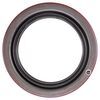
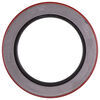




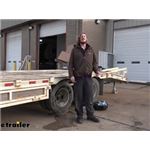


















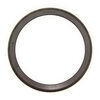
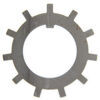



















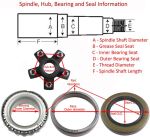
Jenny N.
11/11/2022
I sincerely apologize for the that the order was delivered to you. Customer Service will be in touch to assist you.